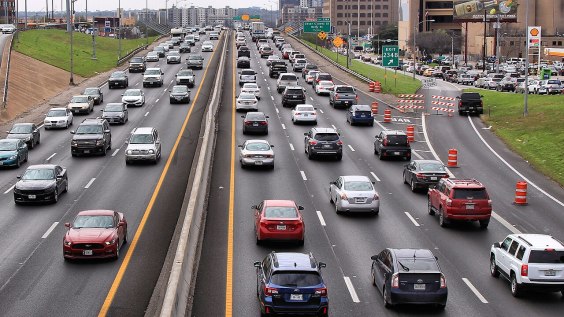The California Air Resources Board recently issued its Scoping Plan, which lays out state goals to fight climate change. It is meant to be a guiding document that sets attainable targets and suggests ways to meet them, although much of the policy that will be needed is outside the purview of the Air Resources Board itself. Collaboration between numerous state agencies and the legislature will be necessary to shift state resources and policies towards climate-friendly outcomes.
CARB staff worked for more than a year on the scoping plan, and it covers a lot of ground, including clean energy, phasing out fossil fuels, and electrifying everything. Under pressure from community groups, CARB also increased one of its goals: reducing how much people drive. But the plan also left the question of how to reduce driving mostly up in the air, naming only some general suggestions about how difficult it will be and leaving action up to someone else.
Now the Legislative Analyst’s Office has released a report taking CARB to task for its vagueness.
The LAO charges that the Scoping Plan lacks a clear strategy for meeting any of its 2030 greenhouse emission reduction goals, is vague on whether or which policies, regulations, or financial incentives should be put in place, and punts on the question of needed changes to the current cap-and-trade program.
These problems could delay action, says the report; at the same time, quick action “could be costlier and/or disruptive for private businesses and households.” The legislature itself needs more information to be able to formulate new policies, says the LAO. And the report calls for the legislature to require CARB to submit a report by July clarifying its recommendations.
Basically, says the LAO, the Scoping Plan meets its regulatory requirements but won’t by itself help the state meet its climate goals.
The LAO offers specific suggestions for making changes to the cap-and-trade program, which has been the state’s – and CARB’s – main strategy for reducing emissions, with mixed results. Changes to cap-and-trade would be a job for the legislature, but CARB should provide guidance, says the LAO.
Specifically, it should analyze the impact of reducing the supply of allowances to make the program more stringent (CARB has the authority to do so); limit the use of offsets, which have shown to be a way for polluting industries to emit more, not less, harmful pollutants and greenhouse gases; and consider extending the program beyond its current end date of 2030.
Cap-and-trade was not the main point of discussion at many of the meetings about the scoping plan, but it remains a major strategy, along with the unproven technology of carbon capture and sequestration.
It’s useful that one state agency is pointing out that all the hard work and negotiation that went into a different agency’s creation of a plan is not enough to get the state on its way to meeting climate goals. On the other hand, each agency has its job to do, and much of the work needed is up to other agencies and the legislature, each of which have their own long-winded negotiations to undergo.
That’s the solution that the LAO should offer: how to speed up the adoption of climate-friendly policies across all state agencies.






